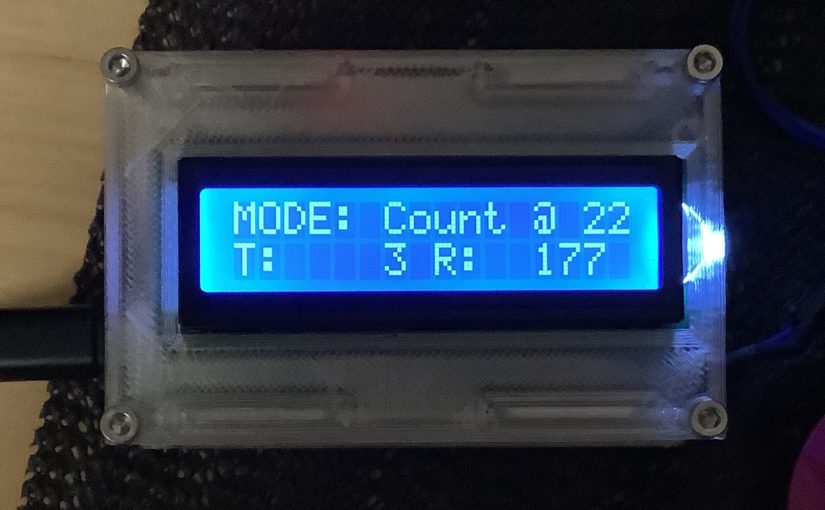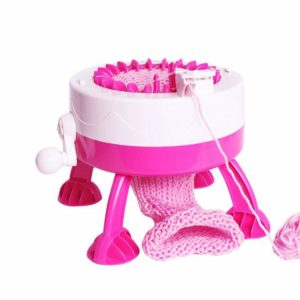
This all started when my wife started to use a circular knitting machine that she purchased recently. These machines can be used to quickly knit hats, scarfs, slippers, etc. I have seen her creating yarn goodness within a matter of minutes. The machine certainly decreases the time to produce goods when compared to traditional hand knitting by several folds. As a toy, literally, it has proven its worth several times over.
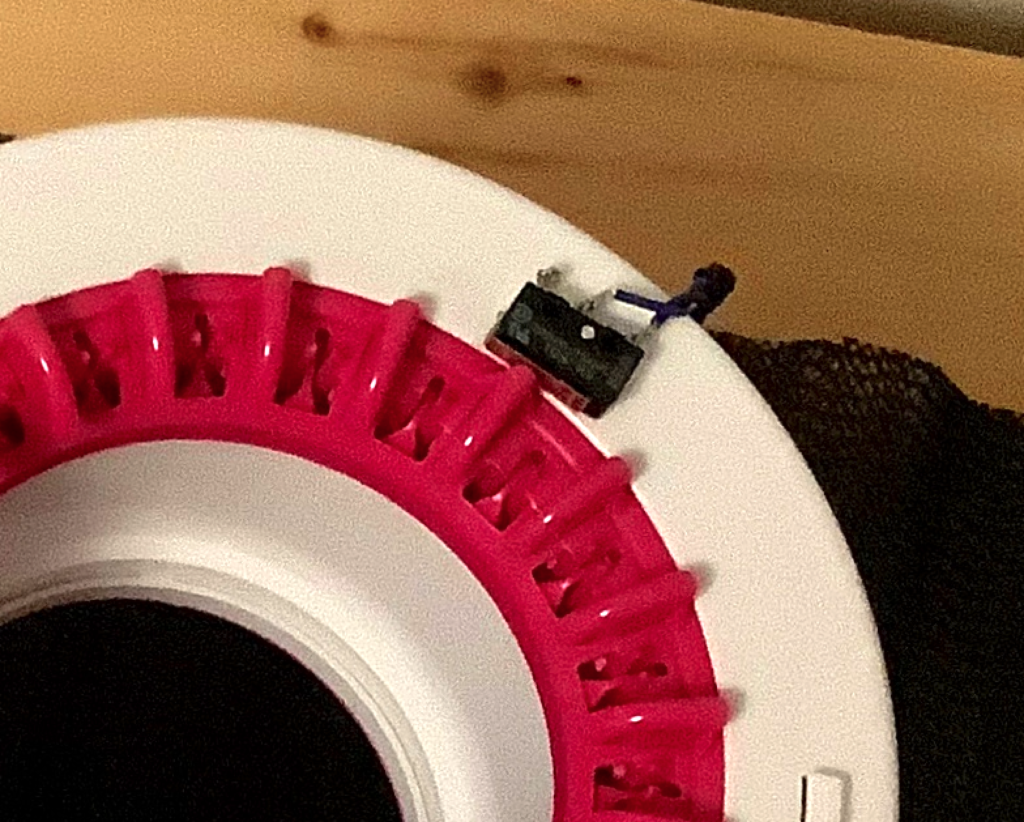
While using the machine, she has found that keeping count on the number of times the machine has revolved can be somewhat challenging. Of course this situation created a need for an electronic counter.
The idea is to use a microswitch to detect the notches on the machine, and use an ATMEGA328P microcontroller (MCU), running at 16MHz, to keep track of the count. The MCU is the same used by the famous Arduino hobby board.
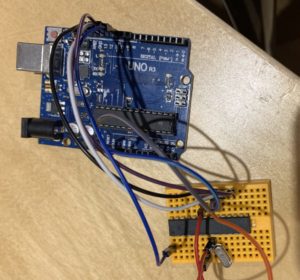
I setup a Raspberry Pi workstation and installed the Arduino IDE on Raspbian. Using a simple circuit described here. I was able to install the boot loader and program a generic ATMEGA328P chip using an Arduino Uno board.
The next step is to create a simple Arduino sketch that keeps count on the number of times the microswitch has been pressed. I also enhanced the sketch to track each press as a “tick” and have the ability to remember how many ticks make a single revolution of the knitting machine. In this fashion, the counter can be used on different sizes of circular knitting machines. The goal is to count both the number of ticks and the number of revolutions knitted so far.
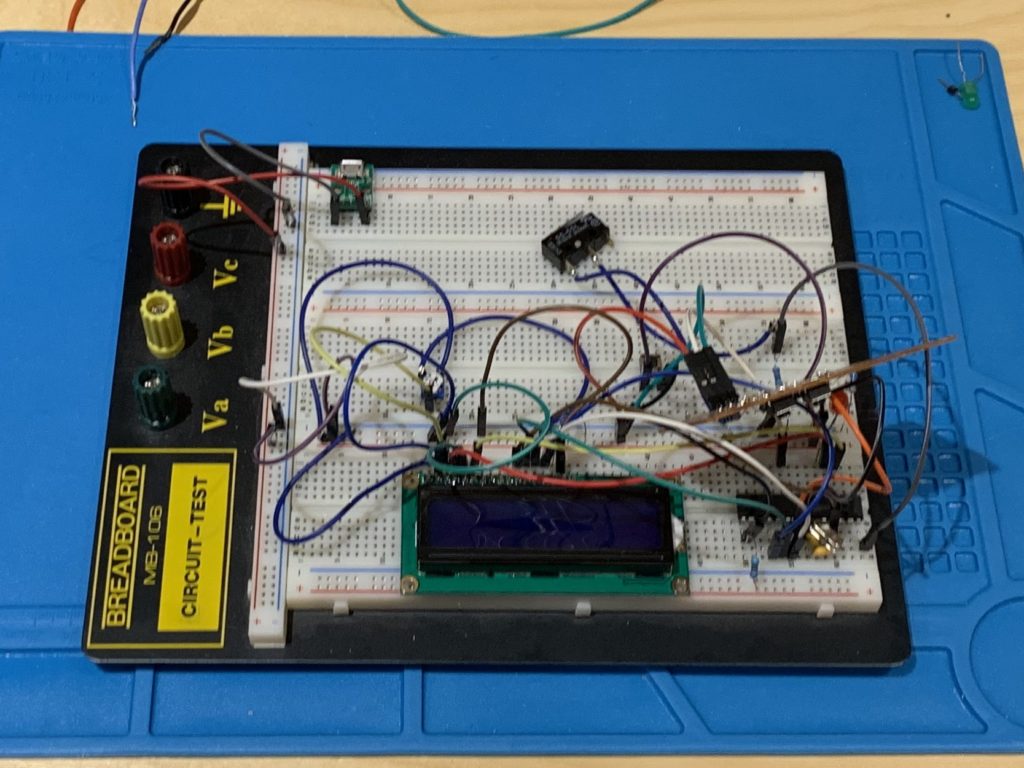
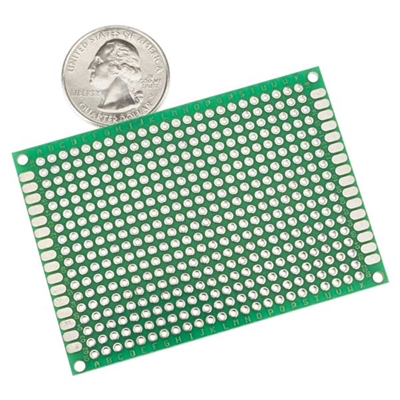
The circuit is then prototyped on a breadboard with an LCD display (LCD 1602). This was the easy part. The hardest part is to solder everything on a perfboard and then design a suitable 3D printed case.
It took many tries on the 3D printer to get certain tolerance right. Finally, putting everything together we get this:
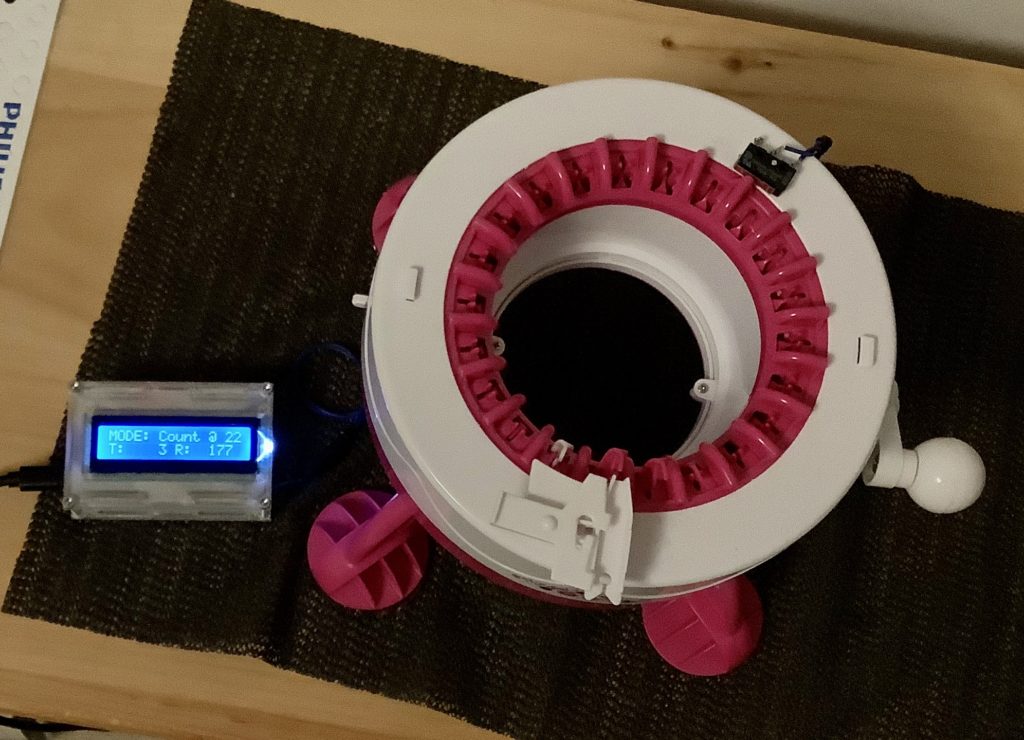
I have to say that this work was super satisfying. As a bonus, the counter can work with any type of sensors or switches that act as Normally Open (NO) and closes when it detects or closed respectively.
As a learning process and an experiment, I would like to create a simple PCB with JCLPCB. However, I have yet to start on that yet.

